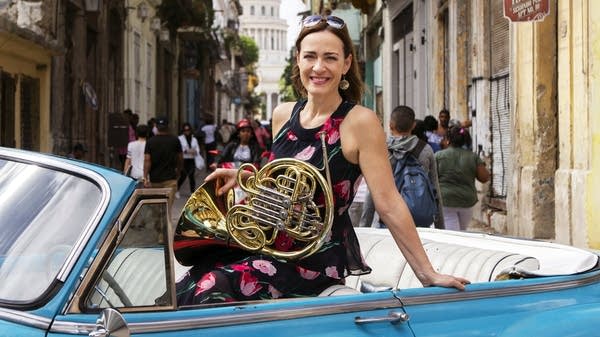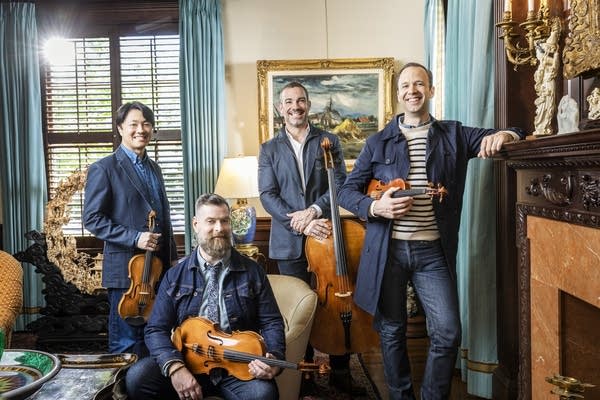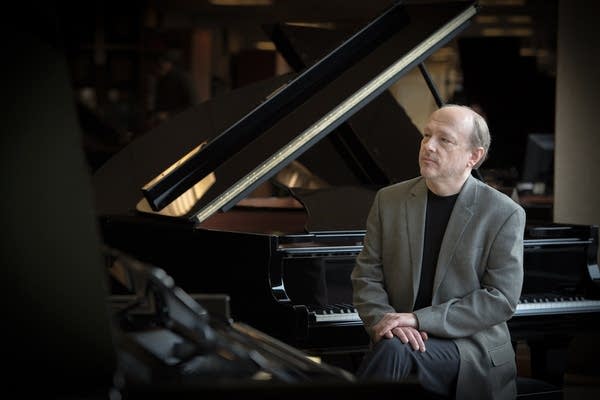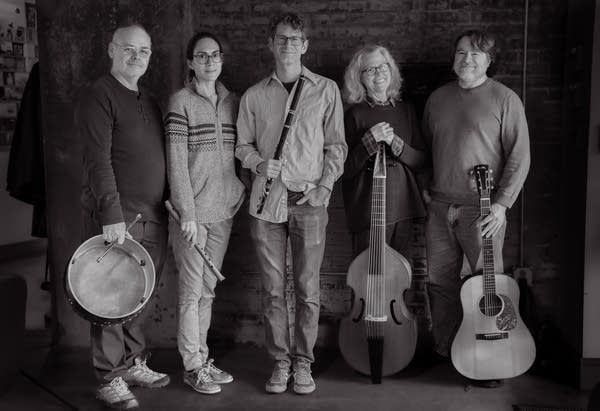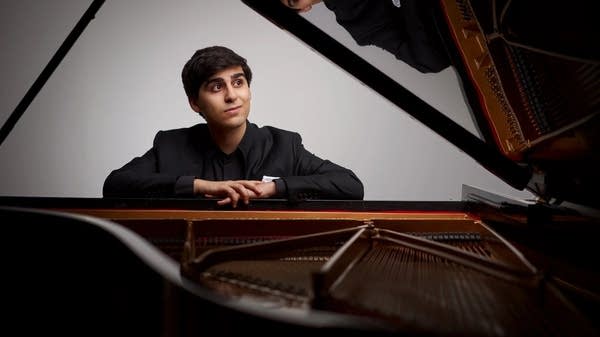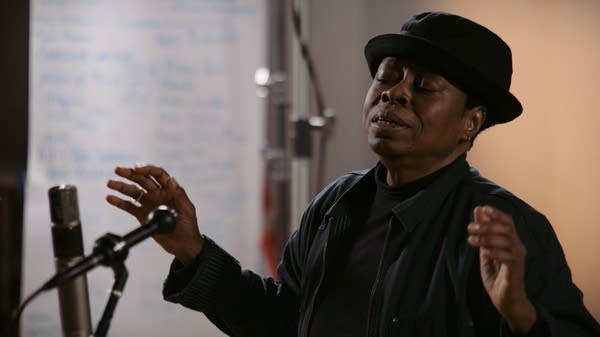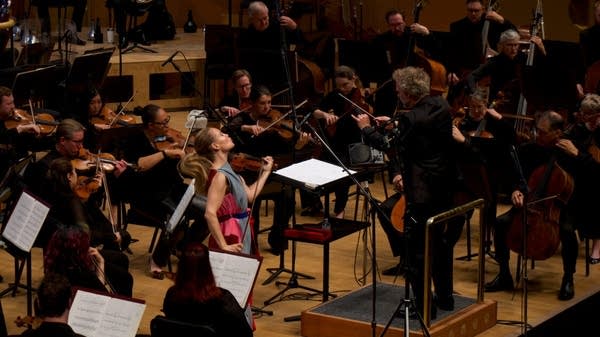Itzhak Perlman, Emanuel Ax: Fauré & Strauss Violin Sonatas (DG)
Itzhak Perlman recently marked his 70th birthday. He's been playing violin for most of those years, and says he's still very much moved by the music. His latest recording demonstrates his musical passion. It features two early Romantic-era Violin Sonatas: one by Gabriel Fauré, the other by Richard Strauss. "I've played these works for many, many years," Perlman says. "But when we recorded it, I still felt so moved by the music, still today. Some people say, what kind of challenge do you have for the future? And I always say to them, 'My challenge is to stay interested in what I do.' And just because I've done something for the umpteenth time, I should not think about it as, 'Oh, not again.' Which I don't. So I feel that that's very lucky, that I can actually go on stage and be inspired by the music."
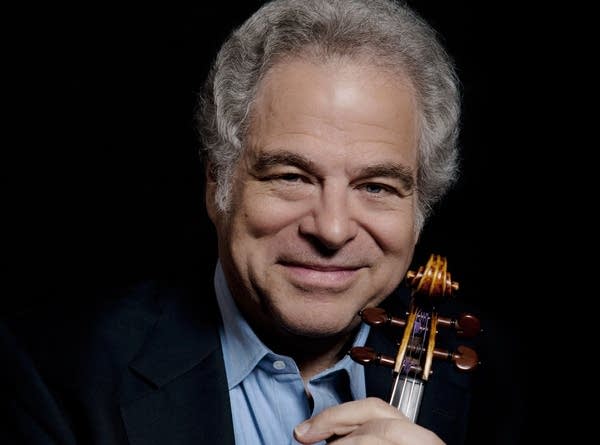
Perlman's chamber partner on this new release is his longtime friend and colleague, Pianist Emanuel Ax. "I've known Manny for many, many years," Perlman recalls. "We used to go to Juilliard and so on. We were living in the same neighborhood, basically Manhattan. I don't remember any time when we did not know each other. But we've never recorded together, and those two sonatas, which I've been playing in recitals for many years, I realized all of a sudden, I've recorded everything else in the repertoire, but why not these? So one time we were sitting down to dinner and I said, 'Listen, we should really do this.' And then I think that lasted a few years until finally we were able to get everybody's schedule properly so that my free days and his free days coincided and … so we went into the recording studio and that's what happened."
What happened is a feast for your ears. Gabriel Fauré's teacher, Camille Saint-Saëns said of Fauré's work, "In this sonata you can find everything to tempt a gourmet." Perlman, who's a bit of a gourmand himself, agrees it is rich and aromatic. "The way I think about the Fauré is not so much about food but about wine. I was saying that it sounds to me like a fine Burgundy wine. For me this is the Pinot Noir of music. There is an aroma when you sort of smell the wine, it has this ambrosia flavor to it and so on, and that's what I think of when I think of this piece é it's like a fine French Burgundy.
"When you think about Fauré, you think about a group of composers that had similar kind of attitude towards harmony, you know. I think about Franck, I think about Chausson, which is incredible when you think about it. Again, that kind of harmonic machinations, progressions and so on that are associated very much with French composers. Of course, the colors are in the score and of course the musicians' challenge is to do these, to express these colors in the way that it does justice to the music, and I'm actually very happy with this recording. Sometimes you listen to the recording and you're always so critical about what you're doing. But this thing, I thought, worked nicely. So I'm very excited that we did that."

Richard Strauss's Violin Sonata in E-flat Major is much more dramatic. The second movement was written as a love poem to his future wife. "There's an intimacy about it, but there's an unabashed romanticism," Perlman says. "I always think of the middle section, it's basically in the piano part, I think about just sitting in one of those café houses in the corner and having a pastry and listening to a pianist in the corner doing a little bit of background music. So it's a very intimate kind of flavor in that particular section and of course the last movement é there's great drama in that movement, when the piano starts very quietly, and all of sudden there's a hero kind of theme almost … that Strauss has been known to compose about. And then the violin comes in and the whole thing is extremely dramatic."
Creating a scene to accompany a piece of music is not uncommon. It's a technique Perlman encourages his students to try as well. "When I teach, I always tell my students, 'If there is something that'll help you interpret the piece — whether it's a story, whether it's a painting, whether it's a scenario — just do it.' But everybody has their own kind of thing that helps them perform something with great intensity and great success and so on. When you think about Mozart, you always think about opera. When you think of a Mozart theme, of anything by Mozart, you always think it's operatic because Mozart was such a great opera composer and so on. So when it comes to either the Strauss or the Fauré, I can think about just colors. The Strauss has more intense colors while the Fauré is more pastel."
Rich and creamy or soft and hazy, this new sonata recording with Itzhak Perlman and Emanuel Ax is tantalizing for the ears … and the imagination.
Love the music?
Show your support by making a gift to YourClassical.
Each day, we’re here for you with thoughtful streams that set the tone for your day – not to mention the stories and programs that inspire you to new discovery and help you explore the music you love.
YourClassical is available for free, because we are listener-supported public media. Take a moment to make your gift today.
Your Donation
About New Classical Tracks®
Host Julie Amacher provides an in-depth exploration of a new classical music release each week.
Subscribe on Apple Podcasts, TuneIn, Radio Public, or RSS.


